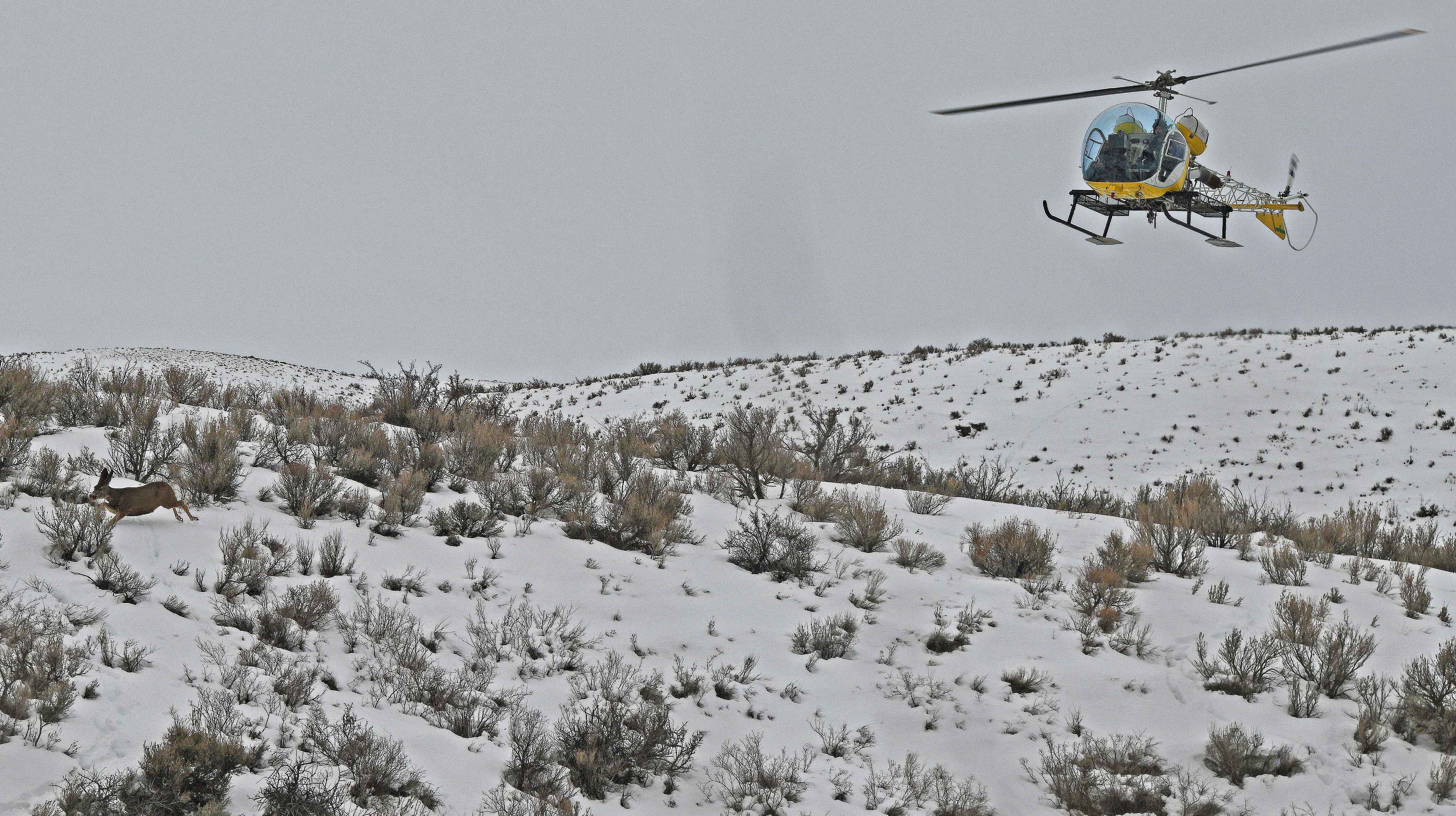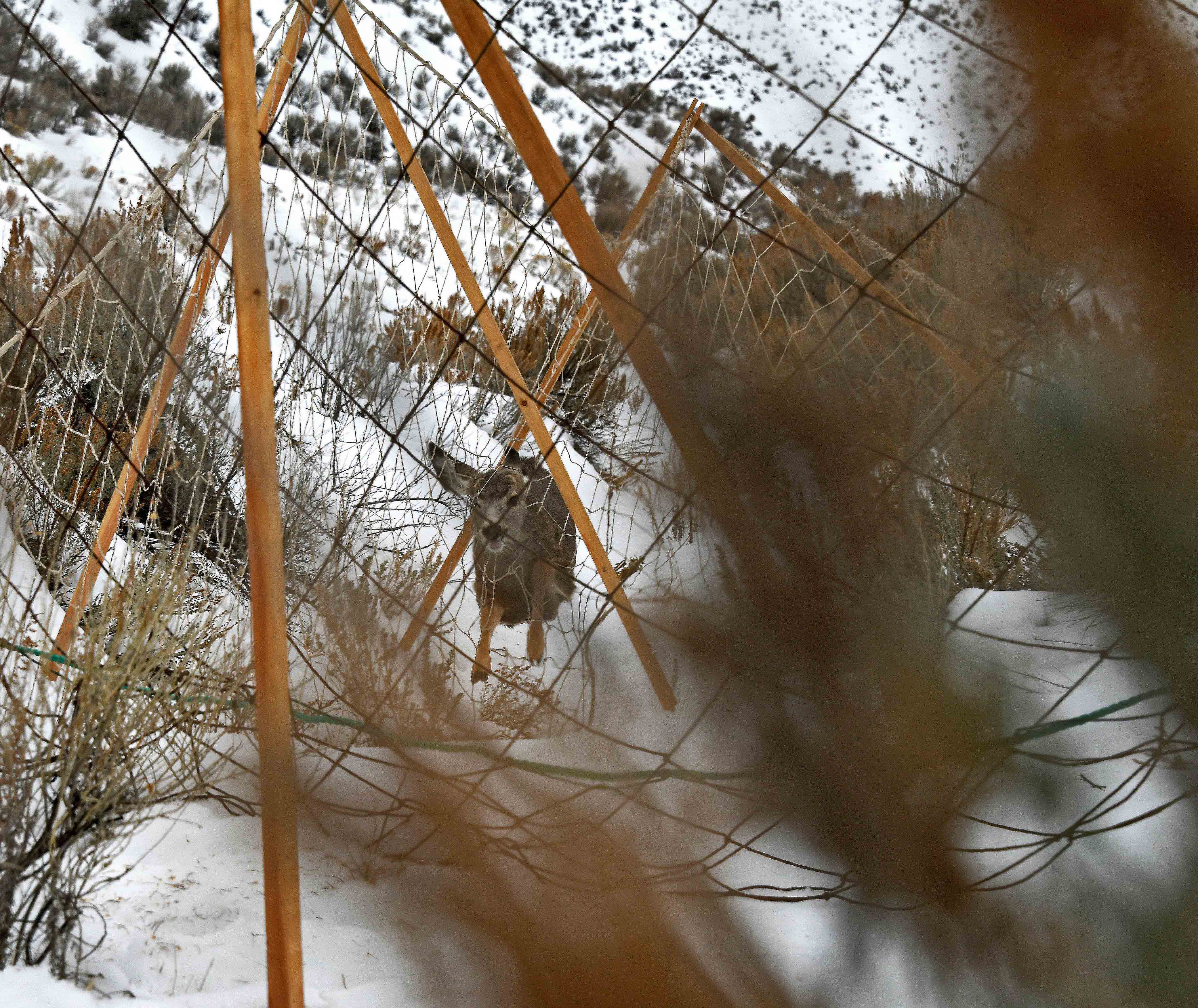Over the next several weeks wildlife biologists from Fish and Game’s Magic Valley Region will be flying mule deer herd composition surveys and capture operations across many of the region’s game management units.
Area residents should be aware that they may see the survey helicopter flying low over the landscape over the next several weeks.



